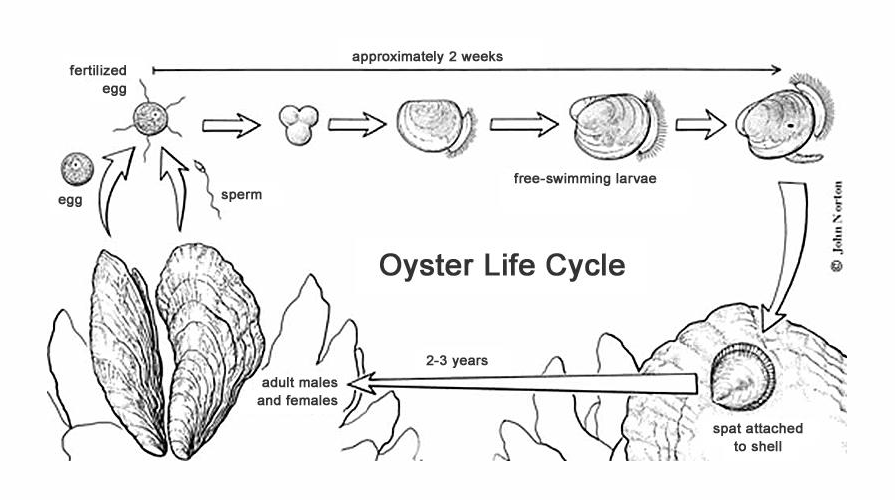Life Cycle

Male oysters release sperm and females release unfertilized eggs, and fertilization occurs in the water column where the sperm and egg unite.
The embryo goes through 3 stages of development: 1) Trochophore, 2) Veliger, and 3) Pediveliger. The trochophore is a free swimming larva with hair-like cilia that it uses for swimming. During the veliger stage, the larva develops the first shell and an organ called a velum that has a ring of cilia for swimming and feeding. Last, the pediveliger stage is characterized by the development of a “foot,” which is used to probe the substrate and find a suitable place to settle. Once it sets, the oyster will no longer move, and is referred to as spat. The spat will grow to maturity and begin releasing sperm or eggs for reproduction.